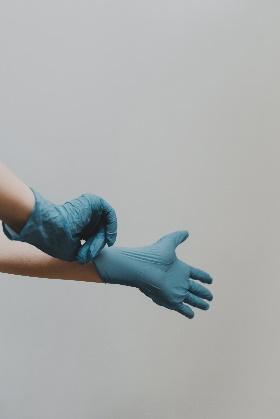Chesterfield, VA – DIY: Mold Removal Steps Taken by a Remediation Company
Posted in: Industry News
Not sure what the professional mold restoration process looks like?

This guide will cover the steps to ensure effective mold removal.
If you suspect mold presence in your home or office, it’s important to act quickly before the situation becomes more complicated. The following steps should give you an idea about what to expect from a professional mold remediation service:
Step 1: Mold Inspection
Mold presence extends well beyond what you can see in the corner or on walls. By the time you notice visible mold, the intruder has already invaded hard-to-see spots in your bathroom, kitchen, and other moisture-prone areas.
Hence, the first step to addressing the mold problem is to conduct a detailed inspection, which involves identifying the mold source and determining the full scope of mold damage. The extent of contamination is also calculated. Based on the findings, mold removal experts develop a restoration plan to ensure comprehensive restoration.
Step 2: Isolating the Infected Area
One the full scope of mold invasion has been determined, professionals isolate the infected area by covering it in plastic sheeting and closing windows and doors. In the case of serious mold invasions, polyurethane sheeting may also be used to seal windows and doors. This step is extremely important because when you attempt to clean mold, mold spores or mold dust rise in the air and if not restricted, will migrate to other areas, paving the way for further mold spread.
Isolating the infected area also helps prevent mold from coming back after the remediation process is complete.
Step 3: Removing Contaminated Materials
As part of the remediation process, certain elements of the affected area such as insulation or drywall may need to be removed. Depending on the type of property, EPA has issued guidelines on what type of materials should be removed and the procedure to dispose of them. Whosoever attempts to conduct mold remediation must be familiar with these regulations.
Step 4: Cleaning the Surfaces
The rest of the surfaces that can’t be removed are then treated and vigorously scrubbed using specialty single-use cleaning wipes and a wire brush. Cleaners must use hand gloves and other protective gear during this step. This step is also when the chances of mold spores rising and migrating to other areas remain high, emphasizing the importance of the first step. One the cleaning job is complete, the cleaning materials are also disposed of in the same manner as the removal of contaminated materials.
Step 5: Disinfecting the Affected Space
After the cleaning process, the affected area is disinfected using appropriate products. Keep in mind that EPA doesn’t recognize bleach as a mold killing agent. It proves ineffective in the case of severe mold types. Many professional mold remediation companies rely on biocide, an EPA-approved liquid to kill mold. But it won’t produce instant results. Apply the product and leave it to do its job overnight.
Get in Touch
By now, you should have developed a fair idea about how mold remediation works. Keeping in mind that certain types of mold can be detrimental to human health, avoid jeopardizing yourself by approaching the situation on your own. Contact STOP of Chesterfield VA to take care of the problem for you. Give us a call to schedule the restoration service.
Return to: Chesterfield, VA – DIY: Mold Removal Steps Taken by a Remediation Company
Social Web